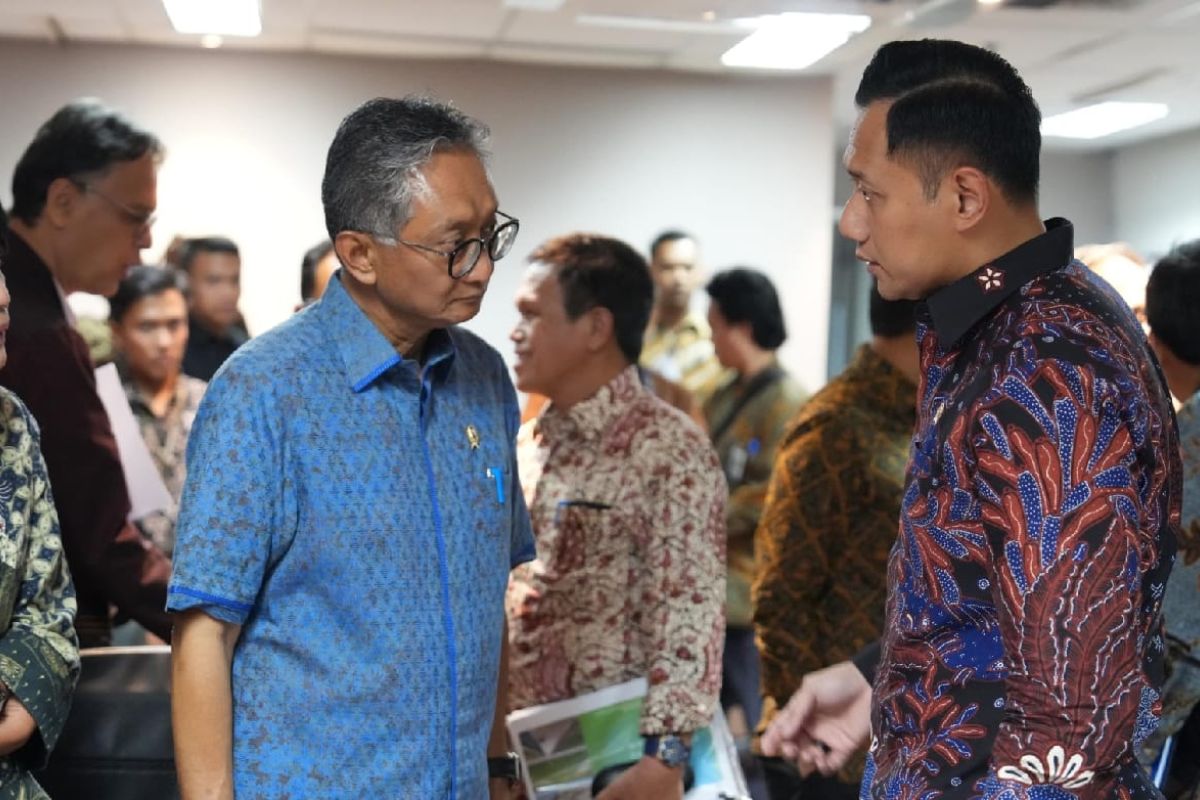Headline: Jakarta’s Giant Sea Wall: A Major Step Towards Flood Mitigation
Jakarta (ANTARA) – In an ambitious initiative to combat the looming threats of flooding and land subsidence, Indonesia has prioritized the construction of a giant sea wall under the direction of President Prabowo Subianto. Coordinating Minister for Infrastructure and Regional Development, Agus Harimurti Yudhoyono, emphasized this crucial infrastructure project alongside plans for the new capital city, Nusantara, during discussions following the cabinet retreat in Magelang on November 1.
Addressing Jakarta’s Urgent Needs
As Jakarta grapples with severe land subsidence and flooding risks, the government is taking decisive action. Minister Yudhoyono’s meeting with Minister of Public Works Dody Hanggodo highlighted ongoing efforts to fortify the north coast of Jakarta, which stretches to Tangerang and Bekasi. The focus is on implementing measures that not only protect these areas from natural disasters but also enhance overall community safety.
"The PU Ministry explained their current progress and challenges. We want the north coast of Jakarta, Tangerang, to Bekasi to be safer due to land subsidence along with the danger of flooding and abrasion," Yudhoyono remarked, showcasing an unwavering commitment to infrastructural resilience.
The Sea Wall’s Specifications and Strategy
The extensive seawall project is no small undertaking. Hanggodo revealed that the anticipated length of the entire embankment from Cilegon to Gresik will cover approximately 958 kilometers. This includes a notable initial trial section stretching 43 kilometers from Tangerang to Bekasi, which was funded by grants from South Korea and the Netherlands.
"This trilateral cooperation began in 2016 with a focus on developing a comprehensive strategy for Jakarta’s coastal restoration," explained Hanggodo. The partnership aims to create a sustainable response to environmental challenges, thus fostering collaboration across nations.
Innovative Solutions Through Collaboration
In 2017, the establishment of the NCICD Project Management Unit (PMU NCICD) marked an essential milestone in coordinating these efforts. By 2020, this unit, along with international partners, produced an Integrated Flood Safety Plan (IFSP). This plan is an innovative approach to tackling flood control by providing clean water, improving sanitation systems, and developing effective flood management mechanisms.
"The construction of a 21-kilometer giant sea wall will serve as the last resort if land subsidence worsens in Jakarta," Yudhoyono stated. This significant phase B project is expected to diminish flood areas by over 112,000 square meters, potentially saving the nation up to Rp600 trillion in economic losses.
Implications for Technology and Infrastructure Development
The construction of the giant sea wall not only serves as vital infrastructure but also opens opportunities for technology professionals and engineers. As innovative solutions for climate adaptation rise, investment in technology such as advanced monitoring systems and flood prevention mechanisms will be crucial.
Local and international experts may find immense opportunities for collaboration in fields like civil engineering, data science, and environmental technology due to the comprehensive nature of this project. By implementing smart technologies, officials can analyze real-time data to enhance the efficacy of flood prevention and monitoring systems.
Community Perspectives and Next Steps
The economic, environmental, and human implications of these infrastructure projects extend far beyond Jakarta’s borders. However, the campaign has faced criticism from environmental groups such as Walhi, opposing the construction of the giant sea wall. These voices raise crucial discussions about balancing development with sustainable practices, urging a deeper examination of ecological ramifications.
Residents and stakeholders are encouraged to remain engaged in the conversation surrounding these developments. Active participation will be vital in informing policies that benefit the communities directly affected by such monumental projects.
As the giant sea wall initiative moves forward, it represents not only a physical barrier against the tides but also a broader commitment to sustainable growth in Indonesia.
How do you feel about the construction of the giant sea wall? Share your insights and thoughts in the comments section below, and stay tuned for updates on this developing story.
For additional context, explore related articles on Shorty-News or visit authoritative sources such as TechCrunch, The Verge, or Wired for in-depth tech coverage related to infrastructure development and environmental technology advancements.


![UQ LiFE download information │ Cheap smartphone/cheap SIM is UQ mobile[official] UQ LiFE download information │ Cheap smartphone/cheap SIM is UQ mobile[official]](https://portal.uqmobile.jp/assets/v2/mobile/support/app/life/images/index_lead_01.png)